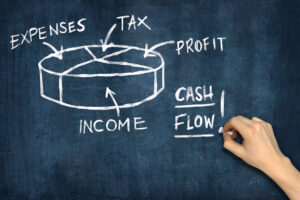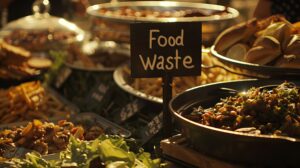July 19,2021
How to Optimize Your Restaurant’s Menu for Maximum Profit

Your restaurant’s menu is more than just a list of food and drink options. The way you design and present it influences customer decisions and sales. From item placement to color and font choices, every detail impacts your customers’ choices. Menus can steer customers towards profitable dishes, enhance the customer experience, and upsell side dishes, desserts, drinks, and more.
Here’s how to leverage the full potential of your menu, from understanding the psychology of menu design to employing effective pricing strategies.
Optimize Your Restaurant’s Menu for Maximum Profit
Understanding how your customers interact with your menu can significantly boost your restaurant’s sales and improve customer satisfaction. Let’s explore some key elements to optimize your menu:
1. Effective Menu Organization
Most people look at the first and last items in a section, a phenomenon known as the “serial position effect.” Place your high-profit items in these spots to subtly nudge customers towards ordering them.
Make your menu easy to navigate by grouping similar items together and using clear headings. This makes it skimmable and user-friendly.
2. Strategic Use of Colors and Visuals
Colors play a crucial role in stimulating appetite and creating a sense of urgency. For example, warm hues like red and orange can make customers feel hungrier and encourage quicker decisions, ideal for takeout menus. Cooler colors like blue and green may slow customers down, making them consider their options more carefully, which is perfect for gourmet bistros.
Use images that accurately represent dishes and highlight their deliciousness. Avoid overwhelming the menu with too many images. Select key dishes to feature with photos to make each image stand out.
3. Crafting Enticing Written Content
Every word on a menu matters. Use sensory-rich language that describes the flavors, textures, and aromas in detail. For example, instead of “Grilled chicken,” use “Juicy, tender grilled chicken seasoned with our secret blend of herbs and spices.”
Incorporate stories about the inspiration, unique cooking methods, or special ingredients of a dish to make the menu item more memorable. For example, “Juicy, tender grilled chicken seasoned with our secret blend of herbs and spices passed down through generations.”
Optimize how prices are written. Leaving off dollar signs and decimals can make prices seem less expensive. According to a Cornell University report, customers tend to spend more when prices are listed this way. Alternatively, ending prices in .99 can make them appear more attractive and affordable.
4. Strategic Pricing and Item Inclusion
Analyze your pricing strategy regularly to ensure it remains both competitive and profitable:
Market Research
Conduct thorough market research to find the balance between attractiveness and profitability. Analyze the pricing strategies of similar restaurants in your area. Consider customer demographics and their willingness to pay for certain dishes. Tools like surveys and focus groups can offer insights into customer price sensitivity.
Identifying High and Low-Performing Items
Use sales data to identify trends and adjust prices accordingly. Assess the performance of different menu sections and items. Identify which items are both popular and profitable.
- High Performers: These are the stars of your menu. Highlight these dishes with special borders or feature boxes.
- Low Performers: Items that aren’t selling well or don’t have good profit margins may need price adjustments, ingredient changes, or recipe revamps. Consider removing items that aren’t profitable, but ensure replacements are introduced to maintain customer interest.
5. Special Considerations for Different Menu Types
When designing catering or takeout menus, consider how well the food travels and holds up over time. Your high-performing dishes at the restaurant might not be best for travel. Create specific menus catering to these needs to maintain high profit margins and customer satisfaction.
6. Utilize Technology for Data-Driven Decisions
Effective menu optimization depends on understanding customer psychology and analyzing customer behavior data. Tools like those offered by WorrkBox company, can help you analyze data to optimize menu design and offerings.
Conclusion: Make a Profitable Menu
Your menu is a powerful tool for driving sales and enhancing the customer experience. By optimizing your menu’s organization, using strategic colors and visuals, crafting enticing written content, employing effective pricing strategies, and leveraging technology, you can significantly boost your restaurant’s profitability.
Optimize your menu and increase your profitability with these data-based insights for menu design and organization. Your menu matters—make the most of it to maximize your restaurant’s success.
Want more inspiration and business tips?
We are committed to keeping your information safe. Read our Privacy Policy to find out more.



